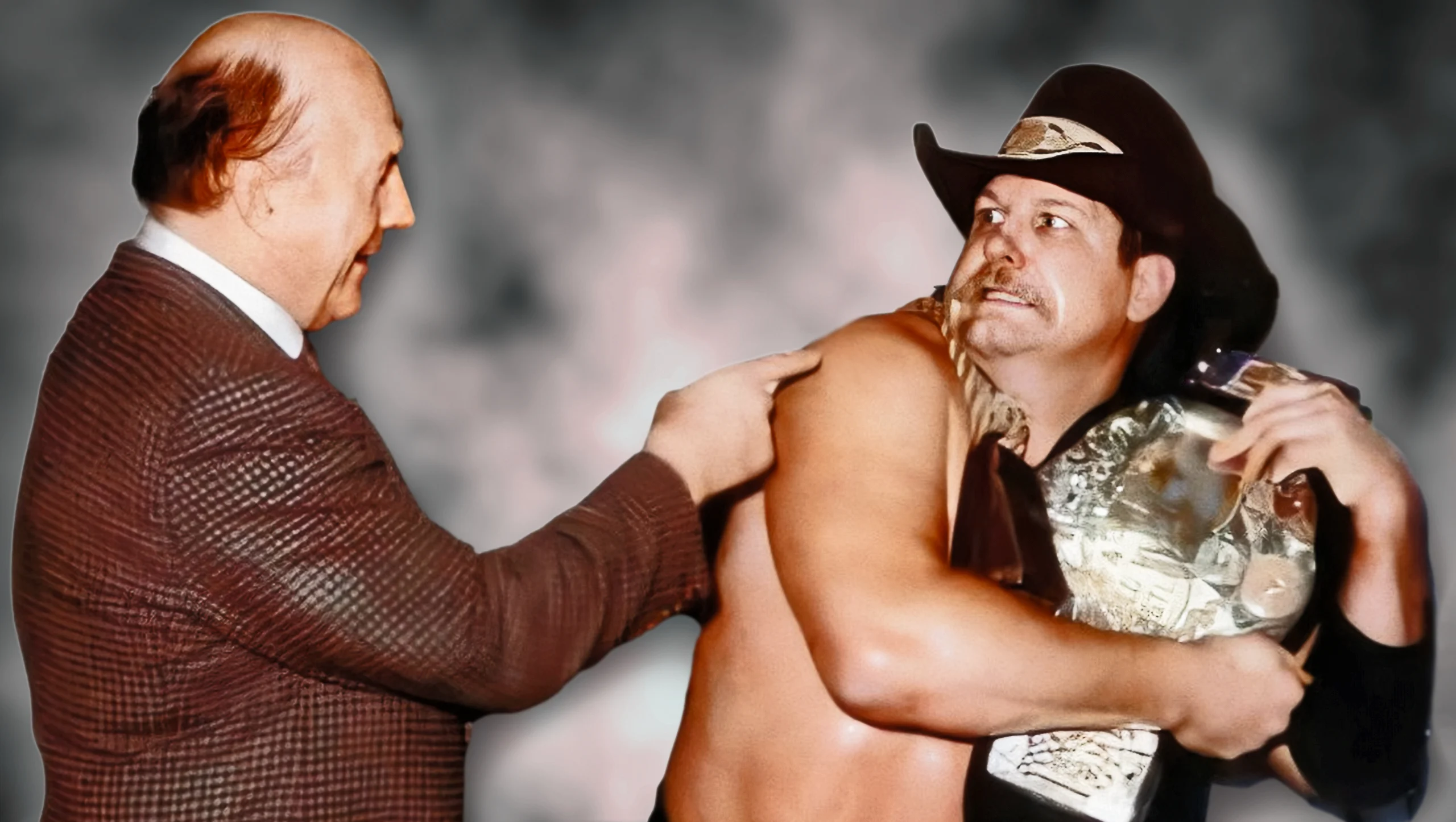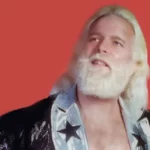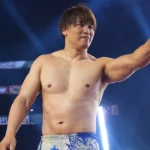Get ready to rumble! Let’s dive into the legendary life of Stan Hansen, a wrestling icon who shook the ring and left an unforgettable impact on the world of pro wrestling. Buckle up for a journey filled with epic matches, legendary feuds, and the incredible story behind one of wrestling’s most iconic stars.
Facts About Wrestling Icon: Stan Hansen
Stan Hansen wasn’t just another wrestler; he was a force of nature who stormed into the ring and left a trail of legends in his wake. Here’s a glimpse into what made him so unforgettable:
The Lariat: More Than Just a Clothesline
You know how some wrestlers have a move that’s more like their calling card? That was Stan Hansen’s Lariat. Picture this: a clothesline so powerful, so explosive, it felt less like a wrestling move and more like getting hit by a runaway freight train. It wasn’t graceful, but it was effective. Opponents knew that one well-timed Lariat from Hansen could be lights out, and that’s what made it so exciting to watch.
The Cowboy: Not Your Average Ring Attire
Forget the tights and masks, Stan Hansen brought the Wild West to the wrestling world. He wasn’t just “playing” a cowboy; he embodied it. From his signature Stetson hat and rugged chaps to his loud, boisterous personality – he was a walking, talking, brawling embodiment of the American Cowboy. It was all part of the mystique, a larger-than-life persona that made him stand out from the pack.
A Hall of Famer, No Question
When you talk about the greats, you’re talking about Stan Hansen. His 2016 induction into the WWE Hall of Fame wasn’t just deserved, it was inevitable. The man was a legend, respected not just for his toughness and willingness to push the limits in the ring, but for the way he influenced wrestling as a whole.
Feuds That Made History (and Sold Tickets!)
Every great wrestler needs a rival, someone who pushes them to their limits and creates those unforgettable storylines. For Hansen, it was epic feuds with giants like Vader and Hulk Hogan that cemented his place in wrestling history. These weren’t just matches; they were battles that had fans on the edge of their seats, wondering who’d be left standing.
Championships: Proof He Was the Best
You don’t win championships by accident. Throughout his career, Hansen racked up titles like some people collect stamps. From the AWA World Heavyweight Championship to the NJPW Triple Crown Heavyweight Championship, he conquered them all, proving time and again that he was one of the most dominant forces in the ring.
Riding Off Into the Sunset
All good things must come to an end, even legendary wrestling careers. Hansen hung up his boots in 2001, leaving behind a legacy that continues to inspire wrestlers and entertain fans to this day. He might be gone from the ring, but his impact on the world of professional wrestling is undeniable.
Who Trained Stan Hansen?
So you’re curious about the wild man, Stan “The Lariat” Hansen, huh? This guy was a force of nature in the ring, known for his brawling style and that devastating lariat clothesline. But even legends have to start somewhere, right? Let’s dive into the origins of this wrestling icon.
Hansen learned his craft from wrestling royalty – the Funk family. We’re talking about Dory Funk Sr., the patriarch of this legendary clan, along with his sons, Dory Jr. and Terry. These guys weren’t just wrestlers; they were masters of their craft, and they instilled a tough-as-nails mentality in their students. It’s no wonder Hansen developed such a ferocious in-ring persona.
Hansen’s path to wrestling wasn’t a straight shot. Before he was tossing guys around the ring, he was tearing it up on the football field at West Texas State University. His size and athleticism were obvious, and those gridiron battles likely helped shape his physical presence in the ring.
Of course, you can’t talk about Stan Hansen without mentioning his time in Japan. Over there, he became more than just a wrestler; he was a full-blown icon. Imagine a foreign wrestler coming into your country and completely captivating the audience. That was Hansen in Japan, especially in All Japan Pro Wrestling (AJPW). He racked up championships, engaged in legendary feuds, and earned the respect of fans and wrestlers alike.
And remember that infamous incident during his short stint in the WWF (now WWE) back in ’76? He went up against Bruno Sammartino, a true legend, and let’s just say things got a little…controversial. It added another layer to Hansen’s reputation as a tough, unpredictable brawler.
Stan Hansen’s journey to wrestling legend was shaped by a unique blend of influences. From the Funk family’s teachings to his college football background, and his incredible success in Japan, all these elements combined to create the “Lariat” we know and love.
Was Stan Hansen in the WWE?
So, you know Stan Hansen was a total beast in the ring, right? This guy was all about brawling, especially over in Japan where fans couldn’t get enough of his rough-and-tumble style. But did this hardcore legend ever rumble in the WWE? The answer is a bit of a yes and no situation.
Hansen first stepped into what was then called the WWWF (World Wide Wrestling Federation) back in 1976. He immediately got into it with the champ at the time, Bruno Sammartino. Now, picture this: a young Hansen going toe-to-toe with the legendary Sammartino. Things got intense, and during one of their matches for the title, Hansen accidentally broke Sammartino’s neck! It was a huge deal and even became part of their storyline. Talk about a rough start!
However, even with that explosive beginning, Hansen’s time in the WWWF was on-again, off-again. He ended up leaving and coming back a couple of times, finally calling it quits with the company (which eventually became the WWE we know today) in 1981. It seems like his super stiff style and that intimidating cowboy persona didn’t quite mesh with how things were done in the WWE at the time.
But don’t think for a second that Hansen faded away! He went on to become a massive star in Japan, winning championship after championship. Over there, fans truly embraced his all-out, no-nonsense approach.
To sum it up:
- While Stan Hansen did wrestle in the WWE (or WWWF as it was known then), it wasn’t a long-term thing.
- He had a famous feud with Bruno Sammartino that involved a real-life injury!
- Ultimately, Hansen found his greatest success in Japan, becoming a legend there.
Want to dig deeper into Stan Hansen’s career? Websites like Cagematch.net are great places to find detailed records and match results!
What did Stan Hansen do to the belt?
Stan Hansen’s time as AWA World Champion got a little messy. It all boiled down to one major controversy – a disagreement over the championship belt itself. See, Hansen had been told he was going to lose the title to Nick Bockwinkel, but he wasn’t too keen on the idea of just handing the belt over. This stubborn streak turned into a full-blown scandal because it wasn’t just any belt. This was the AWA World Championship, a symbol of prestige in the wrestling world.
Imagine the tension. You’ve got AWA owner Verne Gagne, a powerful figure in the wrestling business, on one side, and Stan Hansen, known for his wildman persona, on the other. They’re at odds, and the championship belt is right in the middle of it all.
Hansen’s refusal to play by the rules left a real mark on the AWA Championship. It’s a shame, but that’s often how these stories of defiance go. There’s a price to be paid when you go against the grain, especially when you’re talking about an organization as established as the AWA. This whole ordeal serves as a reminder that defying authority in the wrestling world can have some serious consequences, both for the wrestler and for the legacy of the titles themselves.
Why did Stan Hansen retire?
Stan “The Lariat” Hansen, a legend in the world of professional wrestling, hung up his boots on January 28, 2001. After decades of electrifying crowds with his wild, brawling style, Hansen’s retirement wasn’t exactly a surprise. At 51, he’d been going strong for a long time, and everyone knew Father Time was undefeated.
But what were the specific reasons behind Hansen’s decision? While no one can say for sure except the man himself, a few factors likely contributed.
A Body Built for War, Showing Signs of Wear
Anyone who ever saw Hansen wrestle knows he was tough as nails. He threw his body into every match, holding nothing back. That style made him a fan favorite but also took a toll. Over the years, Hansen racked up a laundry list of injuries. Chronic pain and nagging issues become harder and harder to ignore as you get older.
Eyes on the Prize, Starting to Fade
Hansen was famous for his wild, intense eyes, often hidden behind his signature bullrope. But behind that intimidating stare, Hansen had been dealing with vision problems. These issues made it tougher to perform at his best, and in a business as physically demanding as wrestling, even small limitations can be magnified.
A Changing Landscape
By the time the new millennium rolled around, professional wrestling was undergoing some major transformations. The athleticism and high-flying moves of younger wrestlers were starting to take center stage. This isn’t to say Hansen couldn’t still go – his style was timeless – but the overall feel of the industry was shifting.
Leaving on His Own Terms
Given all these factors, it seems like Hansen recognized it was the right time to walk away. He’d accomplished more than most wrestlers could ever dream of, and he wanted to leave the ring on his own terms, while he still could.
Stan Hansen’s retirement marked the end of an era in professional wrestling. He was one of the last of a breed, a true brawler who left an unforgettable mark on the business. His decision to retire, while likely influenced by a combination of health, age, and the changing wrestling scene, was ultimately a personal one. And sometimes, even the toughest cowboys know when it’s time to ride off into the sunset.
Who Trained Buddy Rogers?
Buddy Rogers didn’t become “Nature Boy” overnight! He learned his craft from some real legends of the ring: Joe Cox, Rudy Dusek, and Fred Grubmeier. Think of them like the wise old masters passing down their secrets to the next generation. These guys were tough as nails and knew every trick in the book. They helped shape Buddy into the wrestler he became.
But Buddy wasn’t just a one-trick pony. He was a natural athlete who excelled in other sports too. Before he stepped into the ring, he was tearing it up on the football field and even throwing punches as a boxer. All that athleticism and toughness definitely came in handy when he started wrestling. It gave him a real edge over his opponents.
Of course, you can’t talk about Buddy Rogers without talking about his personality. The guy had charisma for days! He knew how to work a crowd and make them love him or hate him – it didn’t really matter to him, as long as they were paying attention. He called himself “Nature Boy” and strutted around like he owned the place. He wasn’t afraid to bend the rules a little bit either, which made him even more entertaining to watch.
Now, here’s where things get a little juicy. Buddy’s reign as the NWA World Champion wasn’t without its drama. Some folks accused him of getting preferential treatment and using shady tactics to hold onto the title. It all came to a head when he lost the championship to Lou Thesz under some pretty controversial circumstances. Some people think that whole ordeal is actually what led to the creation of the World Wide Wrestling Federation, or WWWF, which we know today as WWE. They even recognized Buddy as their first-ever champion!
It’s important to remember that wrestling has always been about storytelling as much as athleticism. While we can trace Buddy’s training back to specific people and influences, a lot of his success came from his own natural talent and larger-than-life persona. He took what he learned, added his own flair, and created something truly special that changed the wrestling world forever.
Who trained Nick Wayne?
Let’s talk about the wrestling prodigy Nick Wayne and the man who made it all happen: his dad, Buddy Wayne.
Buddy wasn’t just a dad; he was a wrestling veteran. He took young Nick under his wing, teaching him everything he knew about grappling, slamming, and captivating a crowd. Think of it as an apprenticeship, but with way more sweat and spandex. Buddy’s training gave Nick a rock-solid foundation, setting the stage for what looks to be an incredible career.
Nick officially stepped into the ring at the age of twelve. That’s right, twelve years old and already wrestling like a seasoned pro. He clearly had a knack for it, turning heads and making a name for himself right from the start.
Then came the Four Corners match at Ric Flair’s Last Match event. Talk about pressure! But Nick wasn’t fazed. He rose to the occasion, showcasing his raw talent and solidifying his place in the wrestling world’s eye.
Fast forward to 2023, and Nick’s trophy shelf is looking pretty crowded. He snagged the DEFY Wrestling World Championship title, proving his dedication and skill are the real deal. And remember his AEW signing back in 2022? That was a game-changer, cementing his status as one to watch in the world of professional wrestling.
Through it all, Buddy’s legacy is woven into the fabric of Nick’s journey. You can feel Buddy’s influence in every move Nick makes, every match he dominates. It’s clear that Nick doesn’t just wrestle to win; he wrestles to honor the memory of his father and mentor. This dedication, fueled by love and respect for his dad, makes Nick Wayne’s story all the more compelling.
For those who are ardent followers of professional wrestling, did you know that Minoru Suzuki, a Japanese professional wrestler, uses the Gotch-style Piledriver as his signature move? To learn more facts about Minoru Suzuki.
Jonathan Gresham is another famous wrestler who is known for his Signature Submission, the Octopus Stretch. To know more about him, don’t miss out on these facts about Jonathan Gresham.
- Senior at What Age: Benefits & Eligibility Guide - March 29, 2025
- Unlocking Senior Benefits: How Old is a Senior? Your Complete Guide - March 29, 2025
- Master Russian Politeness:A Guide to Saying Please - March 29, 2025
















